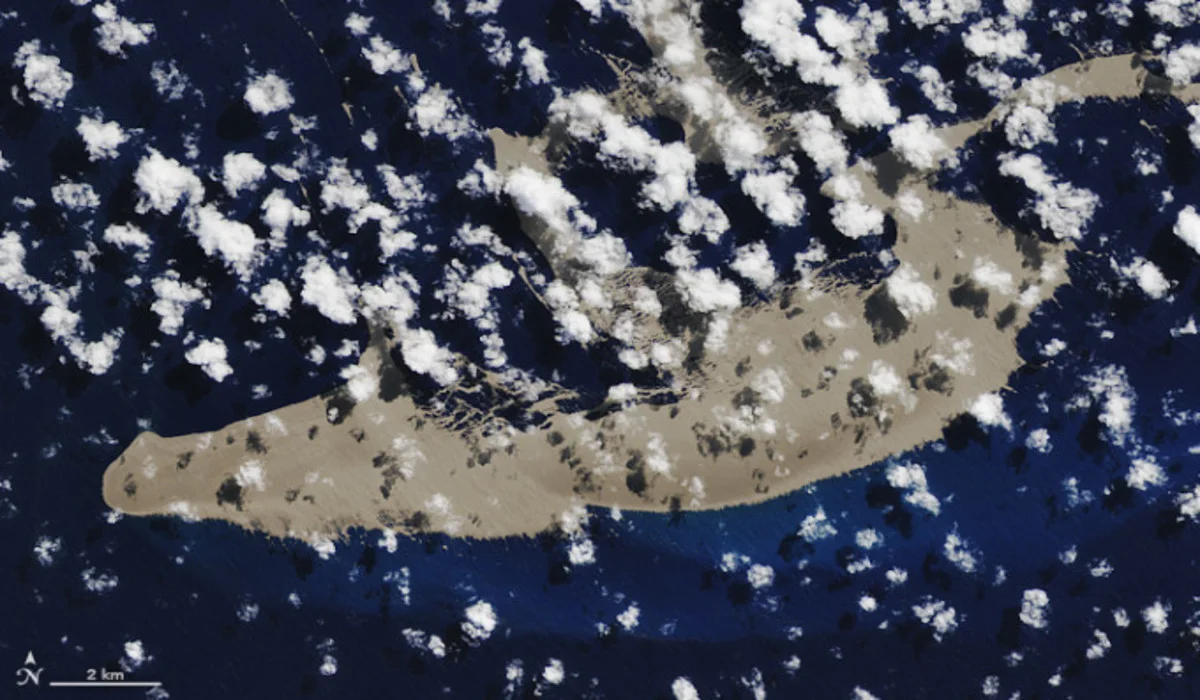
Scientists find out where that giant pumice raft came from
The raft, about the size of Manhattan, was first spotted in August, and has been slowly drifting in the direction of Australia.
Scientists have determined where, exactly, a Manhattan-sized raft of floating volcanic rock came from before it appeared on satellite images and was encountered by at least one boat.
The city-sized mass was first spotted in August, spanning an enormous part of the South Pacific. Though it looks solid from a distance, it's actually a collection of pumice -- rock that is ejected from the volcano in a super-heated state, then traps air bubbles within it as it cools, allowing it to literally float on water. The fragments that make up the raft range from marble to basketball-sized, and because it's not a single solid mass, it wouldn't be able to support a person's weight.
You can see what it looked like to the crew of the catamaran Roam in mid-August, who said sailing through the mass was like plowing a field:
That amount of new pumice doesn't appear out of nowhere, and earlier this week, researchers at Germany's GEOMAR Helmholtz Centre for Ocean Research Kiel have announced they've found the culprit: A 'so-far nameless' underwater volcano 50 km from Vava'u, an island of 15,000 people in the Kingdom of Tonga.
“In the international scientific literature, it appears so far only under the number 243091 or as Volcano F", Dr. Philipp Brandl, the lead author of the study.

Image credit: GEOMAR
In a release from the institute, Brandl said that the team managed to pinpoint the pumice raft's origins by studying satellite imagery before the eruption. Incidentally, Brandl adds that underwatrer volcanoes are particularly likely to produce pumice when compared to their terrestrial counterparts.
The research was published in the Journal of Volcanology and Geothermal Research.
The raft is drifting gradually in the direction of Australia, and is expected to arrive at the Great Barrier Reef in the early part of 2020. This is actually not bad news, as pumice rafts are known to be havens for sea life, and some researchers have suggested the reef, under pressure from warming ocean waters, will benefit from the infusion.






